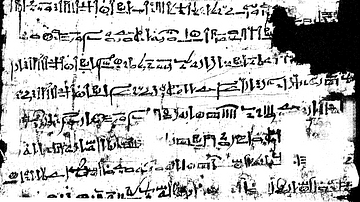Review

| Rating: | |
|---|---|
| Title: | Everyday Cosmopolitanisms: Living the Silk Road in Medieval Armenia |
| Author: | Kate Franklin |
| Audience: | University |
| Difficulty: | Hard |
| Publisher: | University of California Press |
| Published: | 2021 |
| Pages: | 206 |
This book is a study of medieval Armenia and its connection to the Silk Road. It draws heavily on archaeological findings and anthropological theories. Kate Franklin uses a fairly dense writing style, and this book would be a difficult read for a non-specialist in this field.
When I first saw the title of this book, I was excited to read it. Many studies on the Silk Road focus on its eastern end in China or its southern sections in the Middle East, but few scholars have looked at the relationship between Central Asia and this influential trade network. Armenia is a country with an intriguing history, and placing that history in a broader global context would be a very useful endeavor.
One difficulty in studying "world history," as opposed to the history of an individual country, is that it needs to take into consideration a variety of communities, places, and events. Sometimes, it is difficult to draw logical conclusions from these many variables. Of course, the same can be said for the history of individual countries. However, in most cases, especially for countries like Germany or the United States, there are fairly standard and widely accepted narratives that provide a conceptual framework that can facilitate our understanding of history. If someone wants to dispute or reinterpret key elements of these narratives, it is easy to work out what really happened because what is being challenged is a part of a well-known and comprehensively researched story.
In the case of "world history," that kind of consensus is lacking. The topic Kate Franklin takes up in Everyday Cosmopolitanisms: Living the Silk Road in Medieval Armenia is interesting in that the book tries to navigate this complex field. What makes Franklin's content stand out is that the book focuses on the everyday life of locals living along the Silk Road in the Caucasus region instead of examining the already popularly researched political and diplomatic interactions. Franklin's book has a very academic and straightforward structure. It is divided into seven chapters, and each chapter title helpfully summarizes the chapter's content:
- One: The Silk Road, Medieval Globality, and “Everyday Cosmopolitanism”
- Two: The Silk Road as a Literary Spacetime
- Three: Techniques of World-Making in Medieval Armenia
- Four: Making and Remaking the World of the Kasakh Valley
- Five: Traveling through Armenia: Caravan Inns and the Material Experience of the Silk Road
- Six: The World in a Bowl: Intimate and Delicious Everyday Spacetimes on the Silk Road
- Seven: Everyday Cosmopolitanisms: Rewriting the Shape of the Silk Road World
The book also includes a nice collection of maps and photos of the local terrain. Combined with Frankin's theories, this book reconstructs how, for example, Silk Road travelers spent their tired nights with their animal companions at caravan inns. This perspective on "everyday life" asks the readers to think about what living conditions a common trader had to face instead of always focusing on the broader concepts of national politics and international trade.
What might make this book difficult to approach for some readers is that the academic methodology Franklin employs makes the book more readable by scholars or people with an extensive background in this field. This is not to dissuade non-specialist enthusiasts from approaching this book. Kate Franklin is a senior lecturer at Birkbeck College, University of London. Her specialties are in archaeology and anthropology rather than in history. In general, social scientists are much more inclined than historians to base their work on theoretical frameworks. For readers more attracted by the narrative and even story-like style in many historical writings, it might need some time to get used to Franklin's tone.
Nevertheless, this book contains a lot of good information, and professional historians could benefit from Franklin's combination of archaeological and anthropological viewpoints. However, the book would have been a lot more enjoyable to read for a general audience if it had been presented in a more narrative-based manner.
About the Reviewer
Cite This Work
APA Style
Squires, G. (2022, November 23). Everyday Cosmopolitanisms: Living the Silk Road in Medieval Armenia. World History Encyclopedia. Retrieved from https://www.worldhistory.org/review/307/everyday-cosmopolitanisms-living-the-silk-road-in/
Chicago Style
Squires, Graham. "Everyday Cosmopolitanisms: Living the Silk Road in Medieval Armenia." World History Encyclopedia. Last modified November 23, 2022. https://www.worldhistory.org/review/307/everyday-cosmopolitanisms-living-the-silk-road-in/.
MLA Style
Squires, Graham. "Everyday Cosmopolitanisms: Living the Silk Road in Medieval Armenia." World History Encyclopedia. World History Encyclopedia, 23 Nov 2022. Web. 09 Apr 2025.




